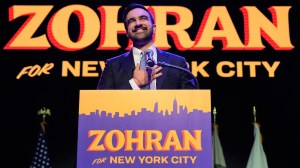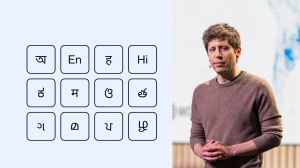Shyamlal Yadav is one of the pioneers of the effective use of RTI for investigative reporting. He is a member of the Investigative Team. His reporting on polluted rivers, foreign travel of public servants, MPs appointing relatives as assistants, fake journals, LIC’s lapsed policies, Honorary doctorates conferred to politicians and officials, Bank officials putting their own money into Jan Dhan accounts and more has made a huge impact. He is member of the International Consortium of Investigative Journalists (ICIJ). He has been part of global investigations like Paradise Papers, Fincen Files, Pandora Papers, Uber Files and Hidden Treasures. After his investigation in March 2023 the Metropolitan Museum of Art, New York returned 16 antiquities to India. Besides investigative work, he keeps writing on social and political issues. ... Read More
Gangs of Gorakhpur, caste wars and the making of UP Gangsters Act, 1986
Gang war between the groups of gangster-turned-politicians, Harishankar Tiwari and Virendra Pratap Shahi, in eastern UP in 1970s-‘80s, which killed dozens, prompted Cong CM Vir Bahadur Singh to bring UP Gangsters & Anti-Social Activities (Prevention) law
 In the Gorakhpur region, there were then two gangster-turned-politicians who were the faces of these changes roiling UP politics: Harishankar Tiwari, former UP minister who recently passed away, and Virendra Pratap Shahi, a two-time MLA who was murdered in 1997 in Lucknow. (Source: Jansatta)
In the Gorakhpur region, there were then two gangster-turned-politicians who were the faces of these changes roiling UP politics: Harishankar Tiwari, former UP minister who recently passed away, and Virendra Pratap Shahi, a two-time MLA who was murdered in 1997 in Lucknow. (Source: Jansatta) In the 1970s and ‘80s, a slew of political leaders who had been part of the freedom struggle were retiring – and a new generation of politicians was emerging, many of whom bent on using every possible means for their rise — from caste identity to muscle-flexing to money power. In eastern Uttar Pradesh, those were the years when society and public life were significantly dominated and polarised by rival Brahmin and Thakur camps.
In the Gorakhpur region, there were then two gangster-turned-politicians who were the faces of these changes roiling UP politics: Harishankar Tiwari, former UP minister who recently passed away, and Virendra Pratap Shahi, a two-time MLA who was murdered in 1997 in Lucknow. While Tiwari started politics from his student days in the Gorakhpur University (now renamed after Deendayal Upadhyay) campus, both of them were known criminals before they joined politics.
During their initial years in public life they were patronised by leaders of their caste, even as they became established politicians themselves later. It was the gang war between the groups of these two strongmen which led to the killings of their several dozen members and prompted then Congress chief minister Vir Bahadur Singh to bring The Uttar Pradesh Gangsters and Anti-Social Activities (Prevention) ordinance in early 1986.
This law has a provision for “attachment” of property whether or not the cognisance of the offence has been taken by any court against such property owners “if the District Magistrate has reason to believe that any property, whether moveable or immovable, in possession of any person has been acquired by a gangster as a result of the commission of an offence triable under this Act”.
Harishankar Tiwari and Virendra Pratap Shahi started their feud for controlling government contracts, helped politicians and took their help, and went on to become politicians in their own rights by the early eighties.
While Vir Bahadur Singh, who was then irrigation minister, supported Shahi, another minister Sripati Mishra and ex-CM Kamalapati Tripathi backed Tiwari. Both Singh and Mishra later took over as the UP CMs.
The face-off between Tiwari and Shahi spiralled from UP districts like Deoria, Gorakhpur, Basti, Ballia, Azamgarh, Gonda and Behraich to the state capital Lucknow, spilling over to regions bordering Nepal and even to parts of Bihar.
Santosh Bhartiya, a journalist who covered UP extensively in that period for Ravivar, has published several reports on this gang war, which suggest that it had killed several dozen people.
Speaking to The Indian Express, Bhartiya recalls, “These both (Tiwari and Shahi) were very brutal criminals and all politicians and contractors in Gorakhpur region were divided into two groups, one headed by Tiwari, other by Shahi. For nearly a decade there was a war between their gangs, which involved the killings of their men, but the two were known for helping whoever approached them. Sripati Mishra and Vir Bahadur Singh did not have economic interests but protected them in the years when politics was sharply divided on caste lines. To some extent, Mahant Avaidyanath was also with Shahi.”
Bhartiya writes that at one time in early eighties at least 30 UP MLAs were Tiwari’s sympathisers while about 10 MLAs were among Shahi’s backers.
After having established their hold in the world of crime and on government contracts, they started trying their luck in politics too. After contesting unsuccessfully once for the Legislative Council, Tiwari was elected to the UP Assembly for the first time in 1985 as an Independent candidate from the Chillupar seat when he was in jail. Shahi, on the other hand, was elected as an Independent MLA in a bypoll from Lakshmipur in Maharajganj district in 1981, after being defeated from the Basti seat in 1974.
In 1989, 1991 and 1993, Tiwari won as a Congress nominee and in 1996, on the Congress (Tiwari)’s ticket. Shahi won from Lakshmipur in 1985 too. He was killed on March 31, 1997 in Lucknow by Shriprakash Shukla (a sharp shooter, once very close to Tiwari, who was killed in an encounter with the UP police on September 22, 1998 in Ghaziabad).
Vir Bahadur Singh became the CM on September 24, 1985. He also hailed from Gorakhpur, and his first-hand experience in the region is said to have led to his government promulgating The Uttar Pradesh Gangsters and Anti-Social Activities (Prevention) ordinance in January 1986, which was subsequently passed by the Assembly and the Legislative Council, with the law being still in extensive use by the state government.
During Vir Bahadur’s CM stint, both Tiwari and Shahi were the members of the same Assembly. But amid growing closeness between crime and politics, several people with criminal background were turning to politics.
In 1989, D P Yadav was elected from Bulandshahr and was sworn in as a minister of state in the Mulayam Singh Yadav-led Janata Dal government. In 1991, Madan Bhaiya was elected as an Independent MLA from the Khekra constituency – that too while he was in jail far away in Sitapur. In 1989, Atiq Ahmed — who along with his brother Ashraf Ahmed was gunned down in police custody on live TV in a Prayagraj hospital compound last month — was also elected from Allahabad West as an Independent candidate.
In fact, all the parties were then giving tickets to strongmen straddling the worlds of crime and politics. However, when the Kalyan Singh-led BJP government came to power in 1991, it arrested several such MLAs. At least four of them — Harishankar Tiwari, Atiq Ahmed, Madan Bhaiya and D P Yadav — were in jail at one time. However, the Kalyan government was dismissed on December 6, 1992 following the Babri Masjid demolition, with his avowed bid to break politicians-criminals nexus being left in the lurch.
These musclemen-politicians who were able to establish themselves because of support from their caste groups as well as various leaders, later capitalised on the compulsion of coalition politics too.
After the BSP-BJP’s ruling coalition collapsed in October 1997, the Kalyan Singh-led BJP government was saved with the help of leaders like Harishankar Tiwari, who was inducted as the science and technology minister. He continued in the Ram Prakash Gupta and Rajnath Singh governments as the textile minister. Later, he served under the Mayawati dispensation and the Mulayam Singh government as well. In 2007, Tiwari was defeated by the BSP’s Rajesh Tripathi and in the 2012 election he slipped to the third place.
There were many politicians who came from the world of crime but Tiwari remained its key face for decades. In his belt, many preferred to visit him for “justice” rather than approaching courts.



- 01
- 02
- 03
- 04
- 05





























